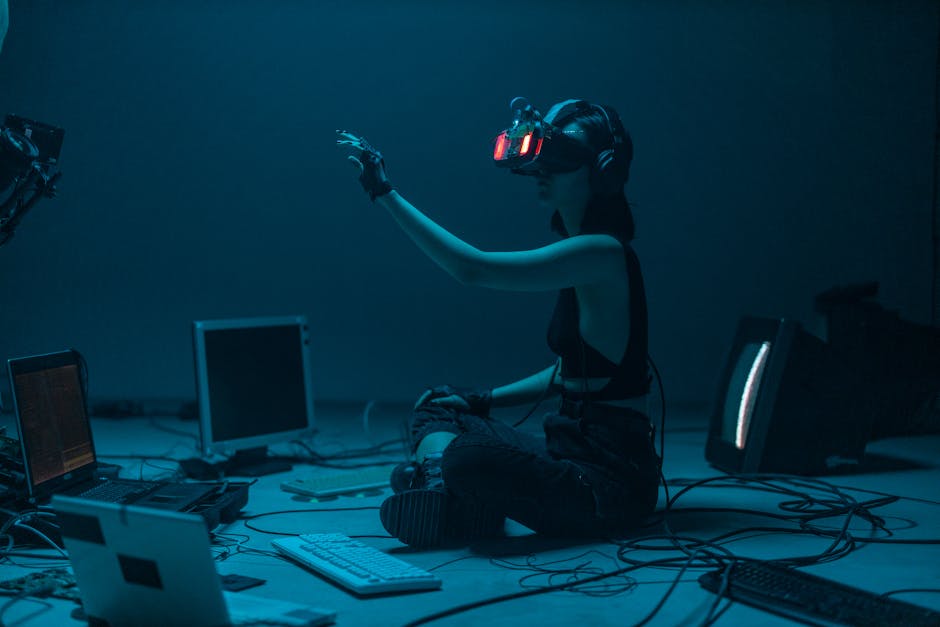The Rise of DIY Game Development: Redefining Indie Game Culture
The world of gaming is evolving at a breakneck speed, and one of the most fascinating trends within this landscape is the rise of DIY game development. Community-based projects are not just reshaping the indie gaming scene; they are redefining what it means to be a creator in today’s digital world. As a gamer, have you ever wondered how this movement is empowering individuals and fostering innovative gameplay?
The Heartbeat of Indie Gaming: Community Collaboration

Indie games have long been a beacon of creativity in the gaming industry. With smaller budgets and more freedom from traditional publishing constraints, independent developers have the unique ability to experiment and innovate. However, the DIY game development movement takes this one step further. The emphasis on community collaboration invites gamers and budding developers to participate actively in the creation process.
Take, for instance, the popularity of game jams. Events like Ludum Dare and Global Game Jam motivate teams and individuals to create games in a short time frame, often leading to surprising innovation and unique gameplay experiences. According to a report by GameIndustry.biz, game jams have become a breeding ground for successful indie titles, showcasing how teamwork can spark creativity.
Platforms Fostering Creativity

The rise of platforms such as itch.io and GameMaker Studio has revolutionized how indie developers distribute their games. These resources not only make it easier to bring a game to life but also allow creators to retain control of their intellectual property and profits. Itch.io, in particular, encourages inclusive pricing models, letting players pay what they feel a game is worth. This community-centric approach allows for a more sustainable model for indie developers.
Moreover, game engines like Unity and Unreal Engine have simplified the technical aspects of game development. With robust online communities backing these tools, developers can obtain instant feedback, code snippets, and even asset resources, dramatically reducing the learning curve.
Breaking Down Barriers: Accessibility for All
One of the most significant changes brought on by the DIY game development movement is increased accessibility. No longer do aspiring creators need extensive training or large teams; now, passion and creativity can take center stage. Look no further than tools such as RPG Maker for a testament to this democratization of game development.
RPG Maker has empowered countless storytellers to craft their own narratives, fostering a vibrant ecosystem around these projects. As a result, players are treated to a diverse range of experiences, each pulsing with new ideas and personal touch.
Community-Driven Projects: A Case Study
An example that brilliantly encapsulates this phenomenon is "Celeste," a game born from a game jam. Originally intended as a small project, the collaborative effort behind Celeste morphed it into an award-winning title that resonated deeply with gamers. Its rich narrative, tight gameplay mechanics, and beautiful pixel art all emerged from a process fueled by community input and collective creativity.
A collaborative project like Celeste exemplifies how community-driven endeavors can yield extraordinary results. Developers often share progress updates and solicit feedback during the development process. This approach not only fosters transparency but also creates a sense of ownership and investment for the players who follow the game's journey.
The Role of Social Media and Online Communities
Social media platforms, such as Twitter and Reddit, have become lifelines for indie developers. They connect creators and players in ways that traditional marketing streams cannot. Online communities provide support through feedback, beta testing, and promotion, ensuring developers are not isolated in their endeavors.
These platforms allow for engaging narratives surrounding development stories. Gamers can actively support projects by sharing them with their networks, helping to build a game’s audience organically. Popular hashtags like #IndieDev, #ScreenshotSaturday, and #GameDev allow developers to showcase their work and build anticipation leading up to launch.
Learning from Each Other: Sharing Knowledge and Skills
As the DIY gaming community continues to grow, so does a wealth of resources and tutorials available to aspiring creators. Websites like Gamasutra, as well as platforms such as YouTube and Twitch, are teeming with informative content that can ease the learning process. Developers can dive into others' experiences, examining what worked and what didn’t, thereby curating a toolbox of knowledge and skills.
This ethos of sharing and collaboration not only aids in individual skill enhancement but also strengthens the community. By celebrating successes collectively and learning from failures, the indie community fosters a culture of growth and support that bolsters innovative practices.
Riding the Waves of Trends
Innovative trends within the gaming industry, such as the incorporation of AI and other emerging technologies, have found their way into DIY game development as well. Indie creators are leveraging these technologies to craft immersive narratives and interactive experiences. A striking example of this can be seen in the trends surrounding AI-driven storytelling, where algorithms help create dynamic narratives that adapt to player decisions, enhancing the overall player experience.
Moreover, the rise of transmedia storytelling in gaming reveals how interlinked narratives can now flow seamlessly across different media, enriching the player experience in multifaceted ways. Games like "Fortnite" and "League of Legends" have successfully utilized this approach, leading to a more cohesive universe that engages players beyond just gaming.
The Financial Landscape of Indie Development
Despite the allure of DIY game development, financial sustainability remains a challenging aspect for many indie developers. While platforms allow for greater accessibility, the economic realities of game sales and marketing are ever-present hurdles. However, community-driven projects often come with shared financial risk—crowdfunding platforms like Kickstarter enable creators to gather initial funds while simultaneously gauging interest.
With the correct marketing strategies, many indie games have proven that they can not only survive but thrive within a competitive marketplace. Developers are learning to optimize their campaigns, build anticipation, and create engaging content that resonates with audiences effectively.
Embracing Failure and Iteration
One of the most significant lessons learned in DIY game development is the importance of viewing failure as a stepping stone toward success. Indie developers often release early versions of their games, embracing community feedback to make iterative changes.
This concept of continuous improvement is prevalent among successful indie developers, who often emphasize the importance of playtesting and gathering constructive criticism as part of their creative process. By treating revisions as opportunities rather than setbacks, developers can have a flexible approach that fosters innovation.
This mindset is especially relevant in a field as rapidly evolving as gaming. As the community thrives, sharing insights into failures can sometimes be as beneficial as celebrating successes, creating a collective learning experience that builds stronger developers.
Environmental Consciousness and Indie Games
There's also a growing movement within the indie gaming community toward environmental consciousness. Developers are increasingly aware of the impact of their creations on players and often align their projects with social and environmental causes. Here's where DIY projects really shine: they allow for a more personal touch and an authentic connection to issues that matter to the creators.
Indie games focusing on themes such as sustainability or social justice encourage gamers to reflect on real-world issues as they engage with gameplay. This does not only fuel dialogue but also inspires action, leading to tangible change both in-game and in reality.
Additionally, as gamers become increasingly aware of the environmental impact of gaming (from electronic waste to energy consumption), many indie developers are prioritizing eco-friendly practices in their development processes, further emphasizing the cultural shift.
Final Thoughts: The Future of DIY Game Development
The rise of DIY game development and community-driven projects marks a significant shift in how indie games are created and enjoyed. This new wave fosters collaboration, encourages inclusivity, and pushes the boundaries of innovation within the gaming sphere.
As you engage with the indie gaming community, consider how you can contribute—whether as a gamer, a developer, or simply a supporter. The landscape is changing, and we are all part of this vibrant tapestry of creativity.
Explore projects that resonate with you, provide feedback, and even consider creating your own game with the abundance of resources available. The indie game culture is not merely evolving; it is thriving, and you have a role to play in its growth.


